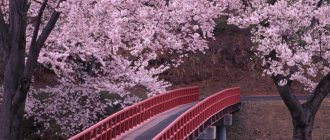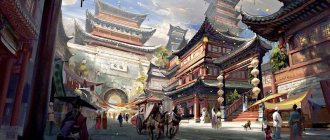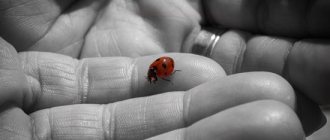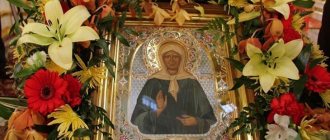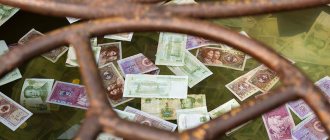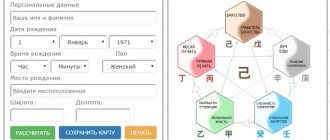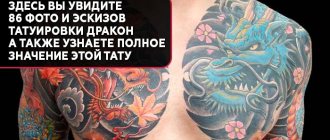Chinese civilization was considered one of the most mysterious on earth, since this territory adopted a policy of isolation from the whole world for thousands of years. It is original and interesting due to the fact that it was not influenced by other cultures. Their mythology is also unique, the main characters of which are huge dragons endowed with different qualities.
Dragon in Chinese - hieroglyph
Calligraphy in China plays a separate role. Each sign, letter symbolizes a certain thing, object, phenomenon.
Since ancient times, a separate hieroglyph was used to designate an animal. It is used in Chinese writing and has a special meaning. Since for the people of China a mythical creature is a harbinger of good luck, the “Dragon” sign in calligraphy carries only a positive meaning.
If you hang an image with a dragon icon on the wall, then peace and prosperity will reign in the house. The peoples of the East have always been distinguished by their special wisdom, so it is difficult to believe that the meaning of the hieroglyph is fiction.
What does the Chinese dragon symbolize?
The dragon symbol in China represents the national group of the country, the entire people, and their traditional culture. The Chinese believe in miraculous power, they believe that a magical essence penetrates into any crevices, descends to the depths of the seabed, and rises to the very skies. This is why the expression “descendants of the dragon” arose.
There is a lot associated with the animal symbol. Everyone knows the ritual of “dancing with the dragon.” The ritual is aimed at appeasing the entity and asking it for peace and prosperity.
In China there is a holiday called Duan Wu. On this day, animal-shaped boat races take place and a flying beast is launched into the sky. Residents decorate various items with its symbol: clothes, canes, musical instruments. It looks different on every item. Somewhere it is a drawing, somewhere it is a convex, carved image.
It is important to note: in China, only a happy future awaits a person born under the sign of a mythical creature.
Mythical character
Archaeological excavations carried out in the Middle Kingdom once revealed interesting finds - images of dragons. The artifacts found confirmed the fact that since ancient times, the Chinese have treated these mythical creatures with special respect and love.
Dragons have always been considered a symbol of positive qualities and phenomena, such as:
- world;
- good;
- prosperity;
- force;
- wisdom.
This is confirmed by a huge number of folk sayings, proverbs, and myths associated with dragons. The Dragon Boat Festival is still celebrated on the fifth day of the fifth month of the lunar calendar.
In China, the dragon is
called "long".
It is believed that Lun was born during the reign of the Xia family - in the 7th century BC. Even then, his images were applied to fabrics, weapons, household utensils, doors, and musical instruments.
In Chinese mythology, the moon personifies the water element, without which soil fertility is impossible, and it lives in bodies of water - rivers, seas, ponds, lakes. The dragon is sent by heavenly deities to help people. He came when he himself considered it necessary, although later people themselves began to call on him.
In this regard, rituals appeared that could summon a dragon, and with it the long-awaited rain. The Chinese burned incense, made sacrifices, and held ritual dances so that the moon would bring them happiness. His arrival was associated with upcoming changes in life.
In the 1st century, a sage named Wang Chong was able to collect all the knowledge about dragons in the treatise “Lun Heng”.
Some legends said that the moon changes its place of residence every year depending on the season: in the summer it lives in the skies, in the fall - in the depths of the sea, and in the winter - underground. Gradually, the moon gained more and more power and began to dominate the gods of the elements - thunder, lightning, wind and rain.
Sometimes they talk about not only good, but also evil dragons living in mountain gorges. They have incredible power and are capable of sending misfortune to people. There are many legends that tell of heroes heading off to fight evil dragons, but most often the moon has a good meaning and good intentions.
The dragon is a constant hero of the Chinese shadow theater.
According to Feng Shui, the moon symbolizes activity, the masculine principle is yang, while the phoenix bird symbolizes passivity, the feminine principle, and yin. They complement each other, so the Chinese tend to keep coins or figurines with their image in their homes, which, in their opinion, harmonize the space.
There is one interesting case in the history of the end of the last century. Residents of a small Chinese village found the remains of an animal and thought it was none other than Lun. According to the traditional recipe, they ground the bones into flour and began to prepare mixtures based on it to treat cramps, headaches, and cuts.
A famous professor-paleontologist found out about this and determined the age of the remains as 100 million years. Then there was a public outcry, and the villagers had to give the relic to scientists.
From 7 to 9 am according to the Chinese calendar is the hour of the dragon.
Today's Chinese believe that the moon lives among us - he can change his appearance, even turning into a person, so they never stop worshiping him. The eastern horoscope, which does not bypass the dragon, has long been known outside Asia.
Even Europeans fell in love with the image of the noble dragon so much that they get tattoos with its image - both alone and in an ensemble with a phoenx, fire, flowers, a tiger and Chinese characters.
What does the creature look like?
The appearance of the beast differs in different countries. In China there is also more than one species, so in numerous sources we see a common description. There are such breeds of animal:
- Blue scaly;
- Red, green, white hornless;
- Yellow, black, gold;
- With wings, etc.
If we talk about the general idea of a divine creature, then it looks like a giant, terrible snake. She has a pointed dragon tail, long eagle claws, a camel head with deer antlers, sharp teeth, a long tongue, bright demonic eyes and wings.
Interesting fact: the beast can reach a length of 300 meters! That is why many people have a negative impression when it is mentioned. But among the Chinese, huge, terrifying-looking creatures carry only goodness and peace.
Chinese culture and mythology
In Chinese mythology, the magical animal occupies a dominant position. This essence is the king of folk legends and tales. There were a lot of legends, myths, and fairy tales, since he himself is a fantastic creature.
A book called “Journey to the West” gained great popular popularity. It is written in Chinese and occupies an important place in the country's literature. The main characters of the book are dragons.
The dragon in Chinese culture means wisdom, life, light. In old times, the creature was the guardian of jewelry, later it was considered the patron of fertility. The appearance of an animal is a joyful omen. On this day great and brilliant people are born. There is a legend about Confucius: when he was born, two winged mythical beasts descended into his house - harbingers of a joyful event.
There is a belief that the creature is the personification of masculinity, strength, and power. And a long time ago, people believed about his relationship with girls. If a woman saw an entity in a dream or in the sky above her house, then an outstanding sovereign, an emperor, will definitely be born to her or appear in her family.
Captivity
Also, the legend of the red dragon, composed in Wales, says that King Llyd and his brother, King Llewelis of France, previously lived. The tale is included in the Mabinogion. The essence of the legend is that the men were tired of the war between the red dragon and the white one. Their battles could have continued indefinitely if the heroes had not filled the excavated pit with honey, into which these creatures ended up.
The red dragon of chaos was seduced by the sweet bait and fell into sleep. His body, like the white one, was wrapped in canvas. The hole itself in the ground was covered with a thick layer of soil.
Types of Chinese dragons
In China, there are many species of Chinese moon dragons (more than 100). Each of them has its own role. You can consider the most popular of them.
Red Dragon
The red dragon is the foundation of Chinese culture. He personifies the sky. We can see it on many canvases during holidays in China.
Black dragon
The black dragon is called Xuanlong. An ancient creature that can dive into the depths of magical waters.
White Dragon
Bailong (as he is also called) is a white creature of virtue.
Golden Dragon
The golden one was the coat of arms of the Chinese imperial family. The ruler's throne was called the "Dragon Throne", and the emperor's face was called the "Dragon Face". This sign existed on the clothes of rulers.
Water dragon
A large number of creatures live in water and are the rulers of this element. But their environment is not only the depths of water - animals have the ability to soar into the sky.
Green Dragon
Qinglong or green dragon in Chinese cultural sources is depicted in bright colors and is associated with spring. He brings people only joy. This Chinese dragon symbol was used on military banners and was considered a sign of good fortune.
Lung-wan
Among other mythological creatures, Lun-wan stands out for its royal size and power. The cult of this animal existed quite firmly in China. In every city, village, town, temples, statues, and other pieces of art were dedicated to him. During floods, droughts, and other natural disasters, his sculpture was put on display and asked for help.
Tattoo meaning
This creature is often found in the form of a tattoo. Its meaning depends on the location, color and style of the drawing . Here are some common options:
- A sleeping lizard is a symbol of peace of mind and tranquility;
- Next to the tiger is one of the Yin-Yang options;
- Soaring up - indicates the friendliness of the owner;
- Horned - speaks of the decisive character of the bearer;
- With wings - strengthens the strength of the spirit;
- With bared teeth - warns of an aggressive disposition;
- Flying down - indicates the host’s unfriendly intentions;
- Fighting characters are a symbol of the eternal confrontation between good and evil.
In ancient China, members of the imperial family tattooed a winged serpent on their entire back as a sign of strength and power.
When choosing a tattoo depicting this mythical creature, treat it with all responsibility. Do not forget that the drawing will reflect your inner world and can tell others a lot about it.
Chinese dragon names
At the moment, there are a huge number of varieties of the animal, and each of them has a name. Most have the suffix “lun”. There are 4 most popular types.
- Shenlong is a divine being, the patron of the elements of sky, thunder and lightning. Flies, can control the weather, and is depicted with a human head.
- Dilong is the patron of water bodies. It is never visible to the human eye, because it hides in the depths of the sea. But a person who has been in his lair can make contact with him. It is interesting that Diluns marry mortal girls and give birth to offspring of half-humans, half-dragons.
- Tianlong is the guardian of the sky. Protects the heavenly gods from external influences.
- Futsanglong is the guardian of the underground wealth. Lives underground and guards countless treasures.
There are other Chinese moon dragons, called: winged yinglong, blue scaly jiulong, zhilong, panlong.
Chinese legends and tales of dragons
The dragon is a magical, magical entity about which many myths and legends have developed. People believed in them, just as they believed in the power of an extraordinary being.
Legend of the Pearl
A pearl is called an attribute that carries enormous power and energy. There was a story about a poor peasant woman and her son. One day, when the boy was walking to get water, he stopped to get some grass for the goat. Later, the boy noticed that the grass in this meadow was always green and lush. He decided to take a piece of the clearing and plant it in his garden. Digging up the soil, the boy found a pearl, which he brought home and hid in a jug of rice. The plot of excavated soil did not bear fruit and the grass in the garden did not grow any better. But something else happened: the jug in which the pearl was placed was filled to the top with rice! The poor woman did not understand what kind of miracle happened at that moment. Then the boy put his hand into the vessel and pulled out the pearls. This phenomenon did not remain a secret, and soon a local elder came to the woman’s house to seize the jewel. The guy, hoping to hide it, put the pearl in his mouth. It was then that the incredible happened - the boy turned into a winged, fiery beast! Lightning flashed in his dragon eyes, and wings were visible behind his back. The creature rushed into the water and disappeared there. This is how the only owner of the pearl and its keeper appeared.
In all historical stages of China's existence there were many folk tales and legends. People believed in myths because they all meant something.
There is one belief that a person with a mole in the form of a dragon will definitely become a powerful ruler. So one of the myths tells about such an emperor. After death, he turned into a mythical creature and soared high, high into the sky.
Important: a commoner who wore a robe with the name or design of a mythological beast could be punished.
Royal symbol
According to the History of the Britons, in 655-682 the Kingdom of Gwynedd was ruled by Cadwaladr Cadwallon, who had his own dragon. The ruler needed to enter the battle of Bosworth. It went down in history as a large-scale battle between the Lancastrians (ruled by Henry Tudor) and the Yorks. Henry VII was then a contender for the rule of England.
His Welsh ancestry with distant roots favored this. The symbol with a fire-breathing creature was on his banner, and then migrated to the family’s coat of arms. Henry VII issued his coins using this image. Neither the predecessors nor the successors of this king did such things within the mint, which makes the precedent unique.
In addition, in other symbols the dragon was overthrown by the Victorious George. Henry used it not as a bad sign, but rather as a symbol of personal strength and an emblem, on which the creature’s wings were beautifully and powerfully opened, striking in their strength and power. He sat on a mountain covered with greenery. Such a beautiful image was enshrined as a state sign.
